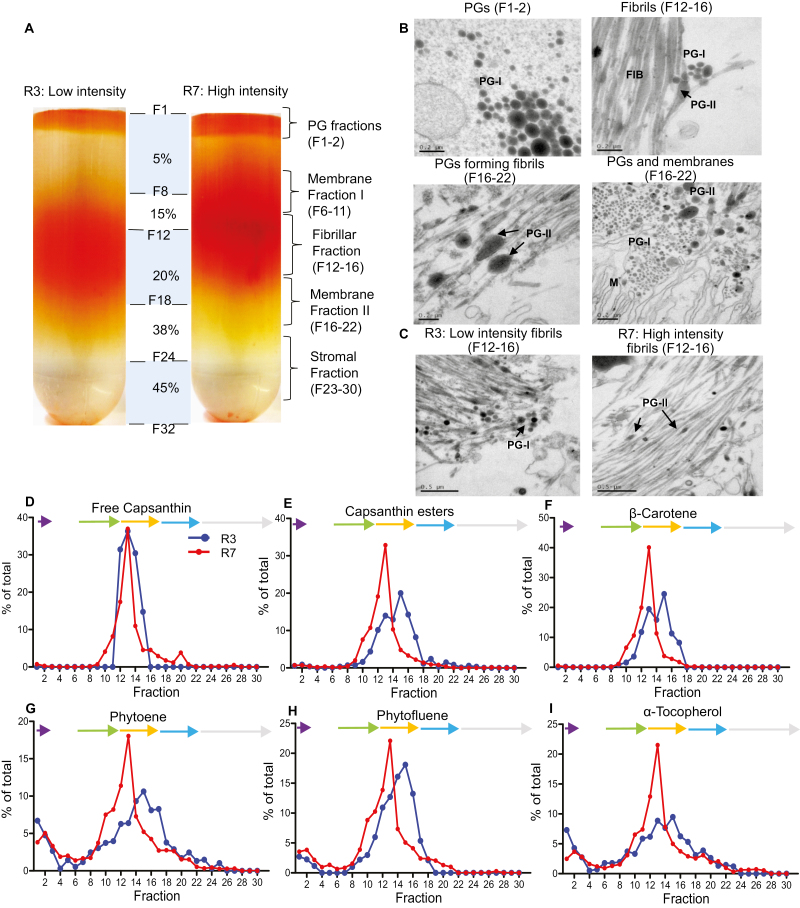Fig. 5.
Subplastid fractionation of red chilli pepper from a low- (R3) and high- (R7) intensity line. (A) Chromoplasts were extracted from ripe fruit (20 g) and separated on a sucrose gradient. F1+F8 had a gradient of 5%, F9–F12 15%, F13–18 20%, F21–24 38%, and F25–32 45% sucrose (w/v) as described in the Materials and methods. (B) Representative TEMs on the fractions of ripe chilli fruit: free plastoglobuli (PGs: F1–F2), fibrils (F12–F16), and fibril formation from PGs and PGs and membrane systems (MII: F16–F22). (C) Representative TEMs comparing the fibril fractions of a low- (R3) and high-intensity line (R7) (F12-F16). Key: M, membranes; PG-I, early stage plastoglobule; PG-II, late stage plastoglobule; FIB, fibril. The pigments in each fraction were extracted and subjected to HPLC-PDA, and the percentage of each compound across the gradient was calculated (total amount of each compound=100%). A representative portion of the most abundant pigments is shown (D–I). The arrows represent the subplastid fractions; purple, plastoglobule; green, membrane fraction I; orange, fibril; blue, membrane fraction II; grey, stroma.

